
The layout of Oxley shed, circa
1947, helps to identify the roles of each building and
shows the overall track layout, while importantly also
illustrating the ash shelters installed in World War 11
to help 'hide' the shed from enemy eyes. Author's
Collection. |
|
Interestingly, a visit to the shed
foreman's office in the summer of 1964 revealed a number
of railway artefacts displayed on the corridor wall,
including a headboard from 'The Cornishman' titled
train, a selection of cab backplate fittings and
controls, together with other cast plates and
photographs. Also on view was a display case containing
a large model of a 2-4-0 locomotive (with a glass
see-through boiler) which had originally been
constructed at Swindon Works in about 1891 for use in
legal proceedings relating to the emission of sparks
from GWR locomotives.
It was not long before the resident
mix of steam locomotives started to share Oxley with
diesel motive power. Although this article is mainly
concerned with steam working, it is however thought
necessary to present a brief general overview of the
drift towards dieselisation at the depot in order to
provide a more rounded view of the situation shortly
before closure.
Diesel locomotives first came to
Oxley as early as 1954, with the allocation of a batch
of newly built 0-6-0 diesel-electric shunters, Nos
13034-39, these later being joined by No 13191. However,
the first main-line diesel locomotive to arrive was
diesel-hydraulic No D1004 Western Crusader, which had
initially arrived on 17 May 1962, having piloted 4-6-0
No 6014 King Henry VII into Wolverhampton (Low Level)
station on a Paddington to Birkenhead train. No D1000
Western Enterprise soon followed, and these two
diesel-hydraulic locomotives were then nominally
allocated to Oxley shed for the purposes of crew and
fitter training.
At the time, Stafford Road shed was
still the supplier of motive power for main-line
working, but it was decided that the new 'Western' class
diesel-hydraulics (and those yet to arrive) ought to be
kept at the somewhat cleaner environs of Oxley, which
also had supplies of diesel fuel available on site. The
'Westerns' were soon to replace the 'King' class steam
locomotives on the trains to Paddington.
Following the transfer of the former Great Western lines
north of Banbury to the London Midland Region in 1963,
the 'Western' class diesel-hydraulics were then
displaced to the south and replaced by some of the
newly-built Brush Sulzer diesel-electrics (later Class
47) and English Electric 'Type 4s' (later Class 40),
some of which had been absorbed from Bushbury shed
following its closure, thus mirroring the transfer of
its steam allocation. The new diesels were soon put to
use on the London trains, but the closure of the old GWR
route via Wolverhampton (Low Level) on 5 March 1967
coincided with the closure of Oxley shed. During the
last years of operation, two Drewry 0-6-0 diesel
shunters had also been allocated to Oxley for general
use, and sometimes up to three differing classes of
main-line diesels could be seen grouped together around
one of the shed turntables. Unfortunately the earlier
London Midland plans for Oxley shed itself to be
converted into a dedicated diesel maintenance and
service centre never came to fruition. |
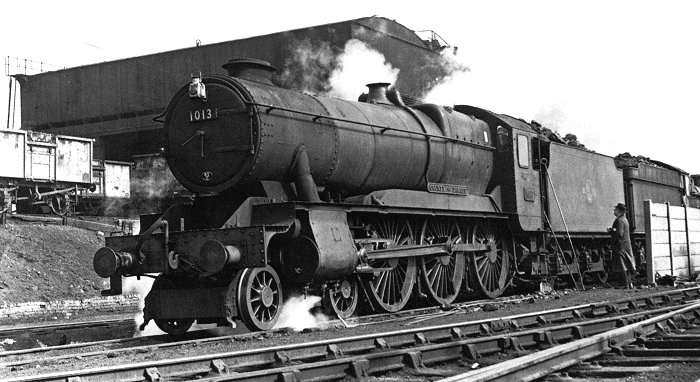
A Hawksworth 'County' class 4-6-0,
No 1013 County of Dorset, is pictured in the approach
yard at Oxley shed, with the coaling bay and overhead
water tank in the background. The engine has been coaled
and is now having its fire raked. The shed's running
foreman appears to be in conversation with the footplate
crew. Ultimately withdrawn in July 1965, this 4-6-0
locomotive would be stored at Swindon until being sent
off to John Cashmore's yard at Newport (South Wales) for
scrapping. J. B. Bucknall. |
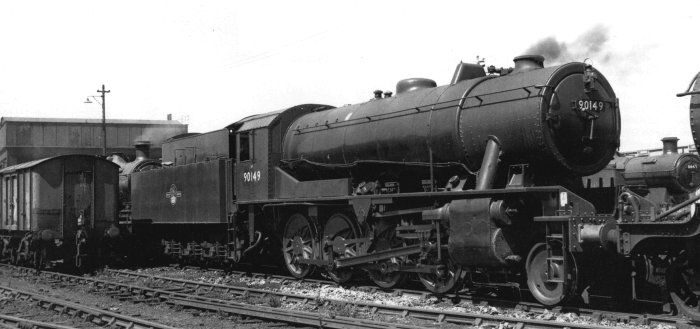
A WD 'Austerity' 2-8-0, No 90149,
is pictured on Oxley shed circa 1962, seemingly in the
summer or autumn months. These heavy freight engines,
introduced in 1943 as part of the war effort, were
designed by R. A. Riddles and were later purchased for
use by British Railways, the depicted engine's first BR
home being Eastfield shed in Glasgow in April 1948. The
reason for the engine's visit to Oxley is not known; it
has presumably come on to the shed after hauling a goods
working, engines of this class appearing from time to
time for servicing. With no shed plate, the 2-8-0 has
perhaps just been transferred - it was Canton-based from
October 1959 to January 1962, and then it was a Southall
shed asset from 28 September until a 2 December 1962
move to Mexborough. J. B. Bucknall. |
|
During the course of the mid-1960s
the old ex-GWR locomotives were disappearing rapidly,
being replaced at Oxley shed by the increasingly grimy
and often badly-maintained former LMS or BR Standard
classes. By 1965, the yard at the rear of the shed (as
with the sidings) had also become a dumping ground for
derelict steam engines of all sorts, including, on one
occasion, a few former LNER engines en route for
scrapping, which were promptly visited by numerous
souvenir hunters.
The shed interior was also a far
cry from the halcyon days of the past, and the regular
weekend cleaning of the walls and general fittings had
long since ceased. The large overhead wooden chutes that
carried engine smoke and smog away to the outside had
started to rot away, and in some cases had collapsed to
the ground. The engine smoke then took to accumulating
in the roof space, turning everything sooty black. The
floors also became thick with dangerous oil and grease,
and this presented a hazard to the unwary, and clearly
time was now running out fast for this last outpost of
steam in Wolverhampton.
The two turntables had originally
been fully decked over with timber boarding which
obscured the actual turntable pits, but around 1964 the
decking and its supporting structure was removed from
the southern turntable; the northern turntable retained
its decking until the closure of the shed.
Oxley shed was formally closed on Saturday 4 March 1967,
although steam engines still found their way there until
the late summer, including 'Black Fives', Stanier '8F'
class 2-8-0s, BR '9F' class 2-10-0s and other BR
Standard locomotives that were receiving minor running
repairs. Some diesel locomotives were also to be found
on shed for stabling purposes. However, these visits
faded away in due course and the place gradually became
derelict, and it was eventually demolished and
dismantled for its Randley red bricks, which were
considered too useful to throwaway. However, the mess
facilities on the eastern side of the shed were
retained, and this original portion of the old 1907
building is still in place and has been incorporated
into the modern-day traction complex. However the
unwanted remains were eventually bulldozed out beyond
the rear extent of the old shed, forming a section of
the bed for the new Oxley Traction & Rolling Stock
maintenance depot, soon to be built on the site. |
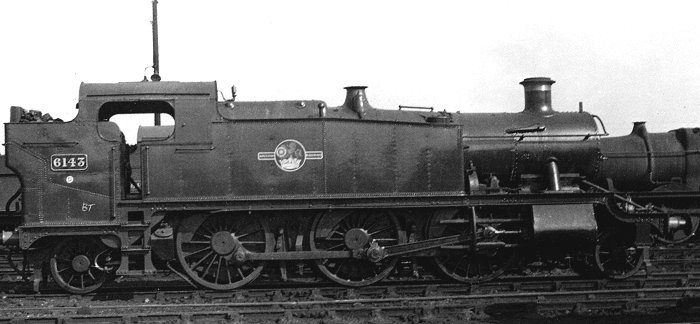
Another visiting engine at Oxley
around the same time is former GWR 2-6-2T No 6143 of
Slough shed, which is seen in the shed yard in ex-Works
condition. This engine had previously received attention
at the Stafford Road Locomotive Works, entering on 2
April 1962 for an Intermediate/Heavy overhaul and
subsequently being released from the Works on 17 May
1962, and eventually being returned to Slough in the
following June. This 2-6-2T would be withdrawn from
service in November 1965. J. B. Bucknall. |
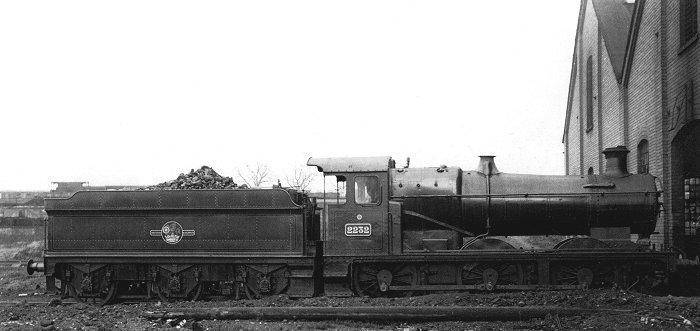
Ex-GWR '2251' class 0-6-0 No 2232
Is seen at the rear of Oxley shed, circa 1962. Believed
to be fresh from overhaul at Stafford Road Works at the
time, the tender has been coaled up ready for a short
test run. This Collett-deslgned locomotive was released
new from Swindon Works on 31 October 1944, and it would
eventually be withdrawn from Worcester shed on 30
September 1964. J. B. Bucknall. |
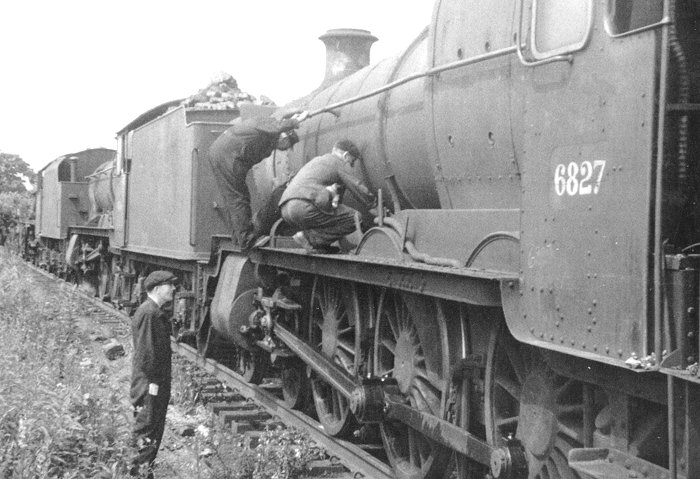
Already devoid of its identifying
brass plates, ex-GWR 4-6-0 No 6827 LIanfrechfa Grange
receives attention at the rear of Oxley locomotive shed
on 30 June 1965. The men seen in the photograph are in
fact in conversation with a young apprentice who is
hidden away inside the frames of the engine, carrying
out an inspection of work required. A Swindon-built
engine of 1937, the last transfer for LIanfrechfa Grange
would in fact come once Oxley shed was in London Midland
Region hands, complete with a '2B' shedcode.
Unfortunately, the spell proved brief, between April
1965 and its withdrawal on 30 September 1965, although
the year was a vintage one for 'Granges' here as at one
point there was an official allocation of fifteen of the
Collett class engines on the shed's books. Author. |
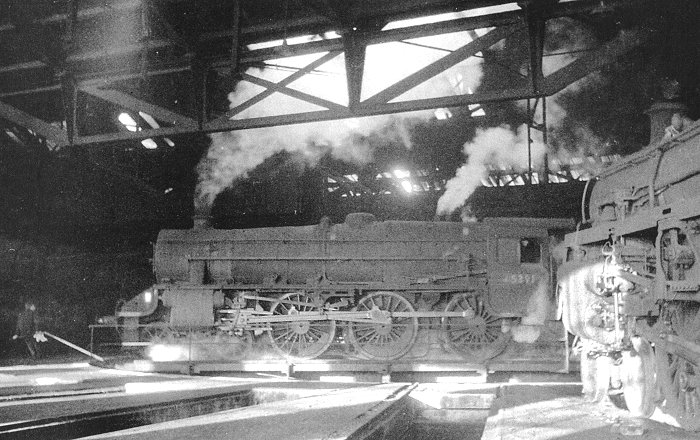
Former LMS 'Black Five' class
4-6-0 No 45391 is turned on the 'southern' turntable
inside Oxley shed during February 1967 while allocated
to Crewe South shed. The boarded covering to this
turntable pit had been removed a few years earlier, but
that to the rear or 'northern' turntable would be
retained to the end. Manual labour remained the means of
operation for moving both of the turntables. This
locomotive last received Works attention in September
1965, but it would gallantly soldier on until February
1968. Simon Dewey. |
|
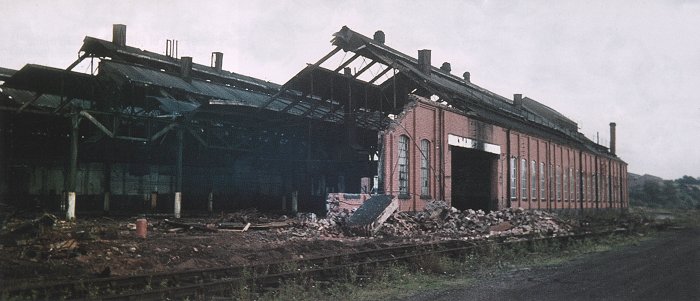
Demolition of the red brick-built
Oxley locomotive shed took place during the course of
1968, starting at the northern end of the building. The
partially-demolished shed is pictured here from its
western side in August 1968. Simon Dewey. |
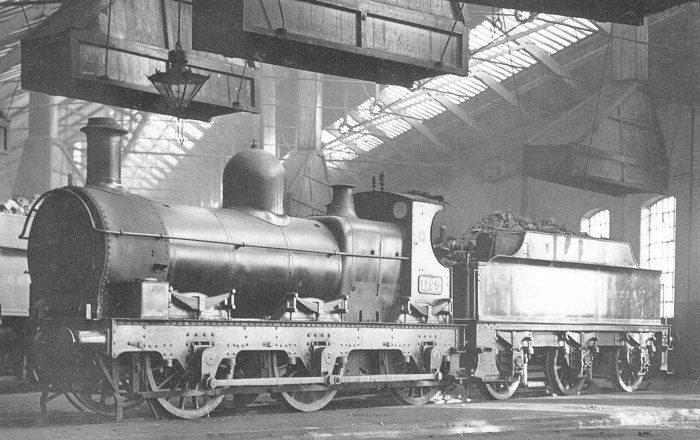
On 24 April 1932, Joseph Armstrong
designed double-framed '388' class 0-6-0 No 1195 is seen
on shed at Oxley. Built over the years 1866 to 1876,
with the depicted engine being an 1876 example, some 72
of these so-called Armstrong 'Standard Goods' engines
were still in service at the 1923 Grouping, 310 of the
class having been built. After World War I the larger
number of survivors were to be found in the
Wolverhampton Division of the GWR, with the largest
number in any one area allocated to Oxley. The last of
the '388' class would prove to be Nos 22, 512, 689,
1094, and 1195, with the depicted engine becoming the
final member of the class at work. H. C. Casserley. |
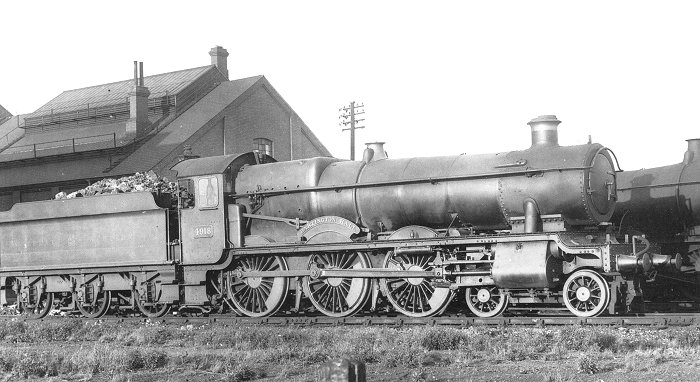
By the 1930s, Oxley shed was fully
integrated with both goods and mixed traffic
locomotives, and here we see 4-6-0 No 4918 Dartington
Hall outside the shed on 28 October 1934. This Collett
engine had been released new to traffic from Swindon
Works on 31 March 1929. Author's Collection. |
 |
|
 |
Return to
part 1 |
|
Proceed to
part 3 |
|